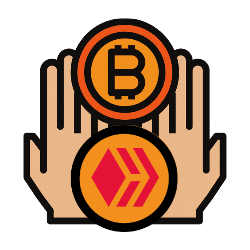Solana has been one of the main starts during the bull run of 2021!
It had an amazing growth with the price of the token going from few dollars up to 200. A lot of dApps, NFTs projects etc, also emerged on the chain. The growth has not been without any hiccups. The chain stopped on many occasions, leaving a major suspicion on the project decentralization.
We are now in the bear of 2022, lets see how the chain is doing under these conditions.

Solana has some unique tech. It is a sort of hybrid between Proof Of Stake (PoS) and a novel concept that they call Proof Of History. There is a lot to say about the proof of history concept, but in short here we will just mention that it is a concept that checks are all the transactions in the right order/sequence. The Solana blockchain works with slots of periods of time, in which the chosen validators confirm the transactions.
Solana has a reputation for one of the fastest blockchains in the history, with a theoretical possible 65k transactions per second. Solana also has a controversial reputation over its decentralization, since it has been put under maintenance and stopped operating a few times in the past.
We will be looking at:
- Active Addresses
- Daily Transactions
- Fees
- Staking and Voting Rewards
- Inflation and Supply
- Market Cap
The period that we are looking into is August 2021 to September 2022.
(The data for the analysis are taken from Dune Analytics, where I have forked existing queries for Solana and adjusted the time frame.
Active Addresses
One of the key metrics for a blockchain is the number of active wallets. Here is the chart.

There has been a growth in the number of active wallets on Solana up to June 2022!
It is interesting that even though 2022 has been a bad year for crypto, the numbers of active wallets kept increasing up to June. Just after June there has been a drop in the number of active wallets from 450k to around 200k where we are now.
Daily Transactions
The activity on the networks is mostly represented by the number of daily transactions. Here is the chart.

The number of transactions is where Solana shines. It probably holds the record for a number of daily active transactions.
At the peak there was more then 70M transactions per day. In the last period there is between 40M to 50M transactions per day.
Compared to ETH where there is just above 1M, or even Polygon where there is 5M to 10M transactions per day, Solana is leading by a lot.
Fees
Fees are quite the unpopular topic and one of the main reasons for the new EVM chains, as users are trying to find a way to escape ETH high fees.

An average fee per transaction per day.
We can notice the uptrend in 2021, with a record high fees in November at the peak of the bull market. In 2022 we can see a constant downtrend with a record low these days.
The numbers here are under one cent per transactions. One cent has been the record high for Solana. In the last period the fees are under $0.001. Its one of the cheapest blockchain to transact on. Because of the very cheap fees we have seen a lot of botting on the chain, but it still manages the traffic. Thing is the validators need a lot of resources to maintain the speed and the numbers of transactions.
Staking And Voting Rewards
Fees are just one aspect that the Solana validator receive as rewards. There are also staking rewards and voting rewards.
Here are the charts.

The staking rewards have been quite constant in the period.
Note that these are three days timeframes so, the daily SOL for staking rewards should be around 40k.
The voting rewards looks like this.

We can see that there has been an increase in the voting rewards in March 2021 and since then they are quite constant with around 75k on a three-day basis (25k per day).
Inflation and Supply
The inflation and supply are on of the most important metrics for a blockchain. Here are the charts from the official Solana docs.

The inflation rate for Solana starts with 8% per year and drops each year, reaching 1.5% after 10 years and stays at that level for the future years.
The supply looks like this.

The current supply of Solana is around 354M, but as we can see from the chart it is projected to reach more then 700M in 10 years time, basically doubling the supply. After that the inflation should slow down at 1.5% per year, and the supply should increase slowly.
Market Cap
At the end the chart for the market cap.

At the peak Solana reached an amazing 80B market cap. For comparison Ethereum is now at 160B, or just double that the Solana peak, and Netflix is around 100B or around the same. So a Netflix sized company in a year time 😊.
At the moment the market cap for Solana is just above 10B, lot less than the peak, but still a significant number.
Solana continues to crunch a massive number of daily transactions even in the bear market. Around 40M per day in September 2022. It has done well on the side of active wallets, growing in the first half of the year, but a drop after June. It has around 200k DAUs now, compared to above 1M on ETH and around 700k on BTC. The fees has went from low to lower with amounts under one cent.
All the best
@dalz
Posted Using LeoFinance Beta



